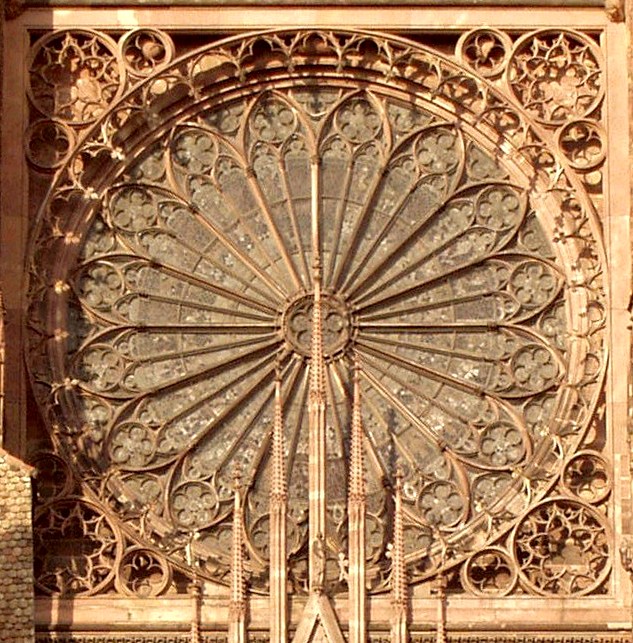|
Eußerthal Abbey
Eusserthal Abbey () was a Cistercian abbey in Eusserthal near Annweiler am Trifels in the Rhineland-Palatinate, Germany. All that now remains of it is the front portion of the abbey church, which is now used as a parish church. History The abbey was founded in 1148 by a knight, Stephan of Mörlheim, and settled by twelve Cistercian monks from Villers-Bettnach Abbey in Lorraine (of the filiation of Morimond). The monks' first task was the clearing of the river valley, to make it cultivable. In 1186 Emperor Frederick Barbarossa put the monastery under Imperial protection. It subsequently received rich gifts, including many vineyards in the south of the Palatinate. A village quickly grew up round the monastery. The monks served at Trifels Castle as chaplains, and watched over the Imperial Regalia while they were kept in the castle during the 12th and 13th centuries. Eusserthal never founded any daughter houses, but it had a priory at Mörlheim. After that the importance of the a ... [...More Info...] [...Related Items...] OR: [Wikipedia] [Google] [Baidu] |
Frederick III, Elector Palatine
Frederick III of Simmern, the Pious, Elector Palatine of the Rhine (14 February 1515 – 16 October 1576) was a ruler from the house of Wittelsbach, specifically the cadet branch of Palatinate-Simmern- Sponheim. He was a son of John II of Simmern and inherited the Palatinate from the childless Elector Otto-Henry, Elector Palatine (''Ottheinrich'') in 1559. He was a devout convert to Calvinism, and made the Reformed confession the official religion of his domain by overseeing the composition and promulgation of the Heidelberg Catechism. His support of Calvinism gave the German Reformed movement a foothold within the Holy Roman Empire. Life Frederick was strictly educated in the Catholic faith at his father's court and at Cologne, but, influenced by his wife, the pious princess Maria of Brandenburg, whom he married in 1537, he followed the Reformation, and in 1546 made a public profession of his faith. He succeeded his father John II as duke of Simmern on 18 May 1557, and ... [...More Info...] [...Related Items...] OR: [Wikipedia] [Google] [Baidu] |
Cistercian Monasteries In Germany
The Cistercians (), officially the Order of Cistercians (, abbreviated as OCist or SOCist), are a Catholic religious order of monks and nuns that branched off from the Benedictines and follow the Rule of Saint Benedict, as well as the contributions of the highly influential Bernard of Clairvaux, known as the Latin Rule. They are also known as Bernardines, after Saint Bernard, or as White Monks, in reference to the colour of their cowl, as opposed to the black cowl worn by Benedictines. The term ''Cistercian'' derives from ''Cistercium,'' the Latin name for the locale of Cîteaux, near Dijon in eastern France. It was here that a group of Benedictine monks from the monastery of Molesme founded Cîteaux Abbey in 1098. The first three abbots were Robert of Molesme, Alberic of Cîteaux and Stephen Harding. Bernard helped launch a new era when he entered the monastery in the early 1110s with 30 companions. By the end of the 12th century, the order had spread throughout most ... [...More Info...] [...Related Items...] OR: [Wikipedia] [Google] [Baidu] |
Eußerthal (Bilder)
Eußerthal is a municipality in the Südliche Weinstraße district of Rhineland-Palatinate, Germany Germany, officially the Federal Republic of Germany, is a country in Central Europe. It lies between the Baltic Sea and the North Sea to the north and the Alps to the south. Its sixteen States of Germany, constituent states have a total popu .... References Municipalities in Rhineland-Palatinate Palatinate Forest Südliche Weinstraße {{SüdlicheWeinstraße-geo-stub ... [...More Info...] [...Related Items...] OR: [Wikipedia] [Google] [Baidu] |
Tracery
Tracery is an architectural device by which windows (or screens, panels, and vaults) are divided into sections of various proportions by stone ''bars'' or ''ribs'' of moulding. Most commonly, it refers to the stonework elements that support the glass in a window. The purpose of the device is practical as well as decorative, because the increasingly large windows of Gothic buildings needed maximum support against the wind. The term probably derives from the tracing floors on which the complex patterns of windows were laid out in late Gothic architecture. Tracery can be found on the exterior of buildings as well as the interior. There are two main types: plate tracery and the later bar tracery. Honour, H. and J. Fleming, (2009) ''A World History of Art''. 7th edn. London: Laurence King Publishing, p. 948. The evolving style from Romanesque to Gothic architecture and changing features, such as the thinning of lateral walls and enlarging of windows, led to the innovation of trace ... [...More Info...] [...Related Items...] OR: [Wikipedia] [Google] [Baidu] |
Rose Window
Rose window is often used as a generic term applied to a circular window, but is especially used for those found in Gothic cathedrals and churches. The windows are divided into segments by stone mullions and tracery. The term ''rose window'' was not used before the 17th century and comes from the English flower name rose. The name "wheel window" is often applied to a window divided by simple spokes radiating from a central boss or opening, while the term "rose window" is reserved for those windows, sometimes of a highly complex design, which can be seen to bear similarity to a multi-petalled rose. Rose windows are also called "Catherine windows" after Saint Catherine of Alexandria, who was sentenced to be executed on a spiked breaking wheel. A circular window without tracery such as are found in many Italian churches, is referred to as an ocular window or Oculus (architecture), oculus. Rose windows are particularly characteristic of Gothic architecture and may be seen in all th ... [...More Info...] [...Related Items...] OR: [Wikipedia] [Google] [Baidu] |



